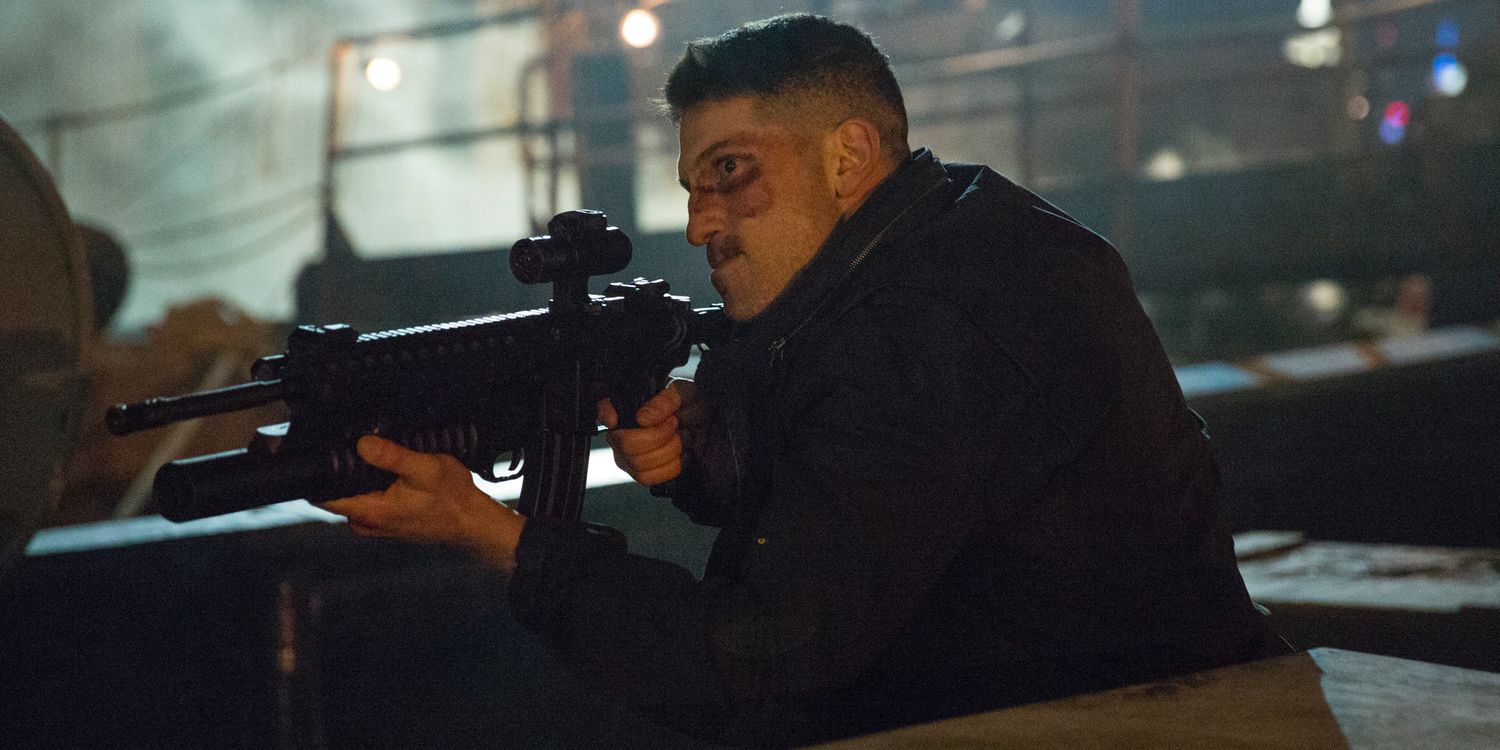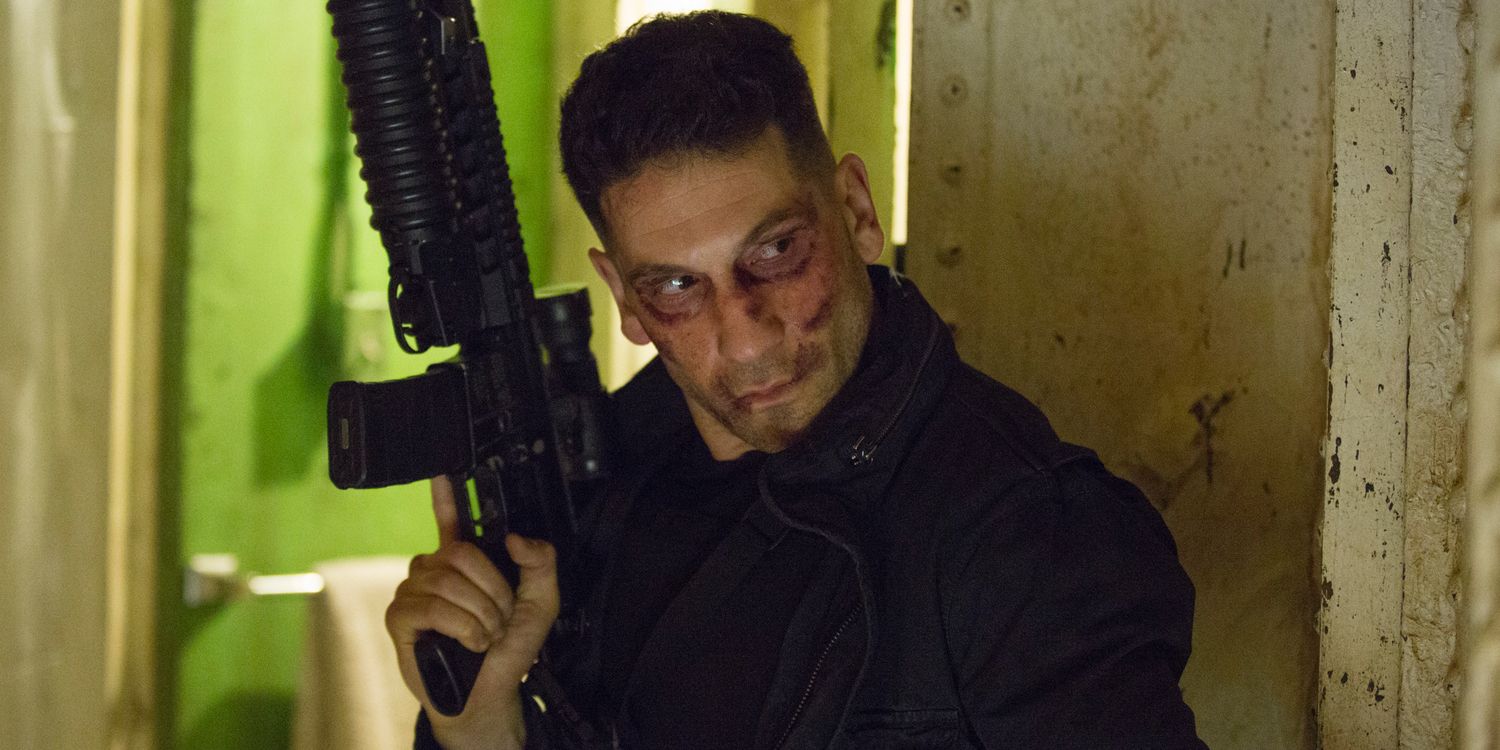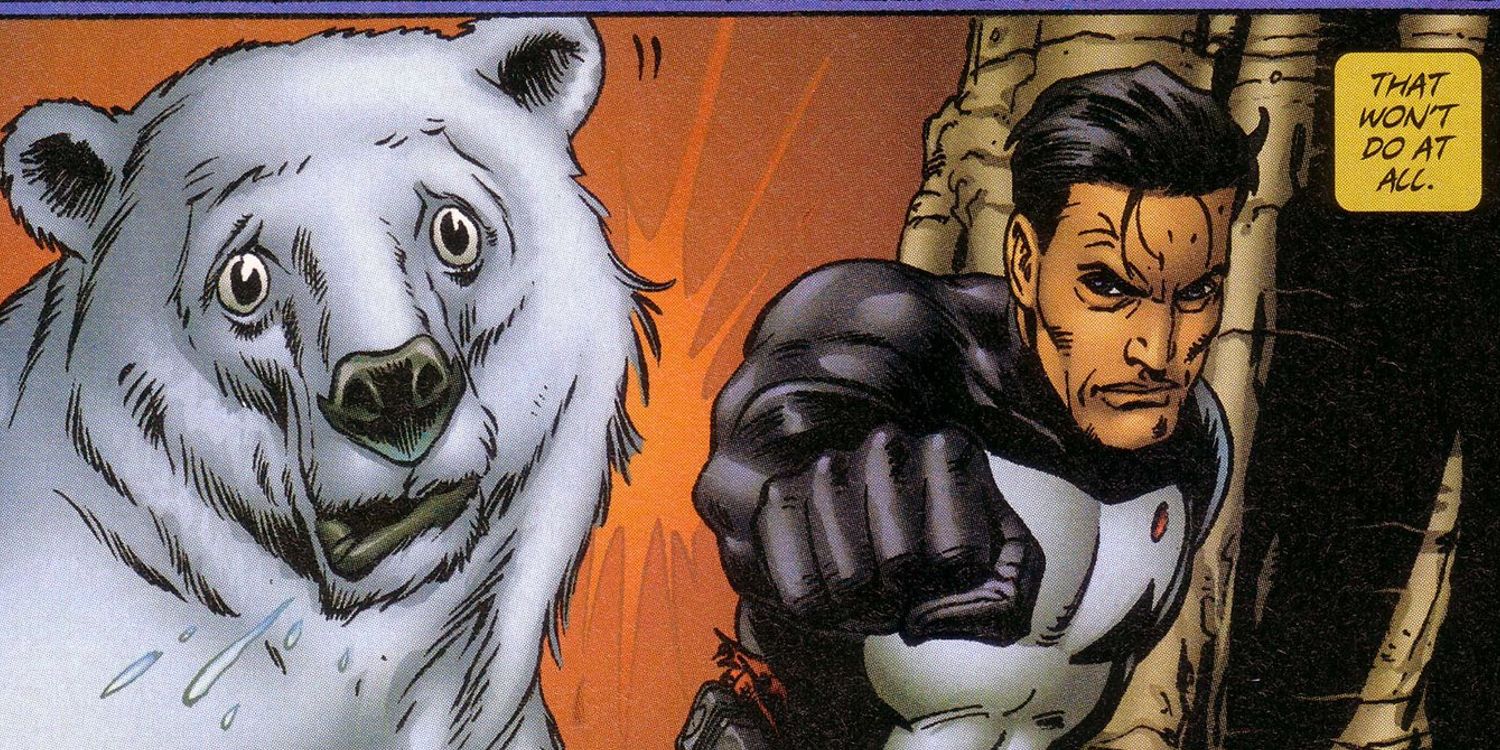[This article contains SPOILERS for the entirety of Daredevil season 2.]
–
When taken at face value, the Punisher isn’t terribly interesting as a character. His motivation – “they killed my family so I’ll kill all of them” – isn’t exactly imbued with subtlety and nuance; there’s not a lot of wiggle room in terms of storytelling when a character exists entirely in one extreme. There is something to be said for that extreme, however. After all, it is this no-nonsense, black-and-white, kill-’em-all approach that led to the character’s brief, supernova-like time as one of Marvel’s unlikely A-list heroes. The unlikely part being: Frank Castle isn’t a hero; he’s the answer to the question: What if the guy fighting murderers and unscrupulous types was himself an unscrupulous murderer? That’s a tricky place for any character to be and an even trickier one for the people in charge of writing him, whether that is in the pages of Marvel Comics or his most recent live-action turn in Daredevil season 2 on Netflix.
After watching his bloody antics in Daredevil season 2 there was a question as to whether or not Marvel or Netflix, or even co-showrunners Marco Ramirez and Doug Petrie, were holding back on the character, refusing to let him completely off the proverbial leash until the timing was right or a deal could be struck that would grant Frank Castle his own eponymous corner of the gritty, streaming MCU. Given the character’s parting shot at the end of the season, there may be some credence to such a claim, although the Punisher’s cell block massacre – a bloody, psychotically distorted version of his red-clad counterpart’s already brutal and violent (yet lauded) hallway fight sequences – may offer a counterclaim as to the actuality of that supposed leash.
But the question isn’t really whether or not Daredevil made full use of the Punisher or if Jon Bernthal’s interpretation was an authentic representation of the character from the comics. Instead, what’s interesting about his appearance in this bruising series is the fact that he works at all, especially when you stop to think how close the mere idea of this character comes to bringing the whole concept of the MCU (or any comic-book universe, really) crashing down. If the team of Ramirez and Petrie should be lauded for anything, it’s the way in which they understand the limitations of the Punisher and how, despite the shades-of-grey moral examinations the character stimulates, simply by interacting with or in opposition to a character like Daredevil, Frank Castle presents an interesting wrinkle (and perhaps a huge threat) to the principles of a show like this.

It isn’t that comic book characters can’t crossover and interact with other comic book characters – after all, this is what the MCU (its strange divides between TV and film aside) is all about, isn’t it? Rather, the concern when it comes to the Punisher is the character’s potential for causing untold amounts of damage in and to the very narrative of which he is an integral part. The Punisher does to the suspension of disbelief, as it pertains to characters like Matt Murdock and his horned alter ego, what he does to the villains he’s up against: He shoots them both full of holes. As attractive as it may be adding a good-guy serial killer to the story of a guilt-prone vigilante like Daredevil, there’s no question the longer Frank Castle stays the more damage he does to everything. As season 2 proved, it’s best to get the Punisher in and out as quickly as possible, otherwise prolonged exposure to the skull-chested madman transforms the cracks in the foundation of the MCU (and all comic-book universes, really) into irreparable fissures.
The Punisher shines a spotlight on the code of a legal eagle like Matt Murdock. He won’t take a life – choosing instead to punch people into submission or, by the look of more than one member of the Dogs of Hell who had the misfortune of encountering a chain-wielding Daredevil in that stairway, make sure they never walk again – but following his rooftop debate with Frank, Matt really only actively objects to the act of killing when the intended victim is a killer whose kills present him with a distinct advantage in his crusade. Stick can’t kill Elektra and vice versa, but if Stick is going to slice and dice a few ninjas to help him out of jam, fine. If Elektra wants to jab a pointy object into someone’s eye (or worse), hey, so long as it means one less bad guy between Daredevil and Nobu, then more power to her.
Yes, it’s important to note the narrative convenience of resurrected ninjas being mowed down by superheroes as opposed to, say, Irish mobsters being unceremoniously blasted through the wall of their favorite pub, or gang members being hung on metal hooks like freshly slaughtered cattle. But it’s a pretty fine line, no? Undead ninja, Irish mobster, or gang member – they’re all monsters in human form and the supposed acceptability of their being killed comes down to one supernatural detail. And as each one is dispatched, the line of acceptability with regard to killing them becomes noticeably smaller. This is especially true when you consider how quickly a decapitation or dismemberment, a stabbing, or even a headshot from a high-powered rifle can facilitate the hero’s advancement toward his end goal. By the end of it, the influence of the Punisher (and the other killers) is downright palpable; even Matt’s objective in the closing seconds of the season’s climactic battle is more vengeance than justice – inasmuch as those two words have any substantial differences in the kind of world this show inhabits.

But the Punisher’s influence goes far beyond his ability to destabilize the unique moral code of a character like Daredevil and extends into the effect his presence has as an unspoken condemnation on superhero vigilantism. The character’s entrance at the beginning of the season was astutely presented in terms that have become terrifyingly commonplace in this country: A lone white male armed with a gun stalks the corridors of some populated area (in this case, a hospital) and begins to open fire. Frank is in pursuit of a criminal and a killer, but the language of this paints him as anything but a hero. And yet, it’s not far off from what his moral adversary would do and has done in the pursuit of justice.
In fact, the series itself sees the Punisher as the logical and terrifying inevitability of giving vigilantes like Daredevil, Jessica Jones, Luke Cage – or anyone in the MCU – the freedom to dole out punishment as they see fit and then plaster them with accolades for doing so. While this wrinkle makes for an interesting lens through which one vigilante must look upon his works and despair, it also puts superheroes in an untenable position; it punctures their echo chamber of righteousness – ironically enough – with a bullet. The Punisher’s actions suggest that all superheroes need policing, because they can’t be trusted to police themselves. And while this affords the streaming segment of the MCU an intriguing, tangential relationship with the superhero registration act in Captain America: Civil War, it again illustrates what a thorn in the side of the MCU a guy like Frank Castle is.
This is why the Punisher works best when isolated to his own corner of the comics, and now, presumably, the MCU. For the other heroes, the ones who work hard to convince themselves and others that their purpose is to protect people, that the inmates are in fact not running the asylum, Frank’s the equivalent of the uncle you’ve distanced yourself from on moral grounds, but still click like on his Facebook page when his birthday comes around. At the same time, however, the Punisher – the idea of him, anyway – is made better by his association with the costumed types who need to keep him at arm’s length. He is at once the cynical spoiler to their supposed virtue and foil to their abundant heroism. The reason Frank is only allowed limited interaction with other heroes is because he so fundamentally disrupts the believability of their existence and the efficacy of their pursuits. That doesn’t mean superheroes don’t work, and it doesn’t mean the Punisher doesn’t work; he just works best when viewed from a skewed perspective.

For proof, look no further than Garth Ennis’ sardonic take on the Punisher and comic book superheroes in general. Ennis’ made a Punisher who punched polar bears in the face, a Punisher who used Spider-Man as a human shield and later told the dazed Webhead, “We had a team-up. You were great.” He made a Punisher who blasted Wolverine’s face off with a shotgun, turning the character’s renowned durability into a punch line. This ribald take on the character was something the Thomas Jane-led The Punisher film didn’t quite seem to know how to process, choosing instead to be a pastiche of Ennis-inspired Punisher-y moments, but without the derisive tone that gave them life. It was something Lexi Alexander’s far more interesting and exaggerated Punisher: War Zone seemed to better understand, but still wasn’t able to convincingly pull off.
While Marvel’s Daredevil largely avoids the mordant tendencies of Ennis’ comics with its depiction of the Punisher, it holds firm to the idea that Frank Castle is an equal opportunity disruptive force – both for the criminals he murders with complete absence of remorse and the heroes his actions paint as either ineffectual or huge fans of recidivism. Marvel took a big risk centering much of its hit series’ second season on a character with three cinematic strikes against him, but it is a risk that seems to have paid off for the studio and for the character. Daredevil season 2 is unquestionably the most effective live-action use of the Punisher ever, and one that seems to open up the possibility of Frank Castle getting his own series. That’s certainly good news for fans of the pistol-packing death dealer, but it’s even better news for the heroes of the MCU. A solo series means the Punisher is still around, but it also means he’ll be otherwise too preoccupied to call other “superheroes” out on their own behavior.
–
Daredevil seasons 1&2 are available on Netflix.




